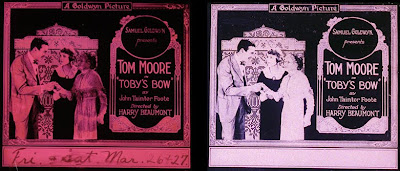Variations on a (color) Theme
July 23, 2010
Color has been part of the cinematic experience from the very beginning. Even the earliest films used color to enhance the spectatorial experience. As early as 1896 filmmakers experimented with increasingly sophisticated techniques in attempt to bring bring color to the screen. These techniques included hand coloring and stencil coloring to realistically color the filmed image, as well as tinting and toning which completely bathed filmed sequences with a single color.

The unique hand-crafted aspect of early film coloring is one of the many reasons that each early film print must be considered to be a unique artifact. No two are alike. Each instance is unique in its manufacture and history, and the marks and scars it bears from its past confirm its artifactual integrity.
In many aspects, early coming attraction slides bear the same unique characteristics as early film prints. To manufacture the glass slides, black and white images were photographically developed on glass panes after which color dyes were individually hand-brushed onto the photo emulsion. Though slides of the same design can appear to be identical, it is not uncommon to find considerable variation. Looking the two The Black Pirate (1926) slides below, the coloring is similar but it doesn't take long to pick out the differences:
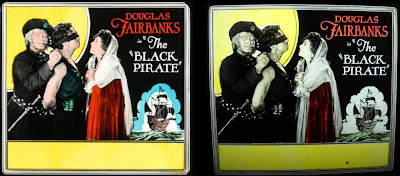
In the case of these two slides for Omar the Tentmaker (1922) the border color is the most obvious difference, but a closer look reveals more subtle differences as well.
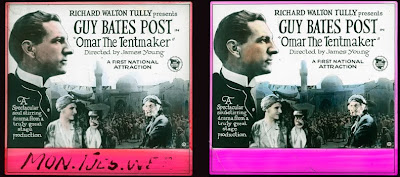
Early motion picture coloring techniques included individual frame coloring (applying multiple colors within each film image) as well as color tinting (applying a single color wash to an entire film sequence). These same techniques were employed in coloring coming attraction slides. Here are two contrasting examples where the different techniques were used to color the same image.
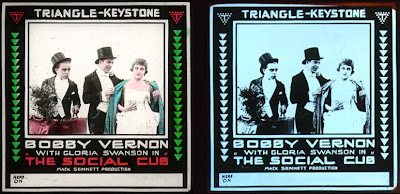
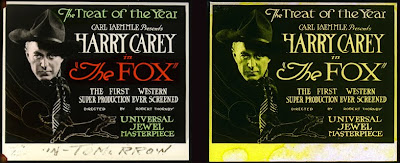
Like the films they once promoted, the surviving lantern slides of the silent era stand as unique artifacts of cinema's earliest days. Each bears its own historical witness, and each, as John Ruskin once wrote ,"connects forgotten ages with each other... in that golden stain of time..."
